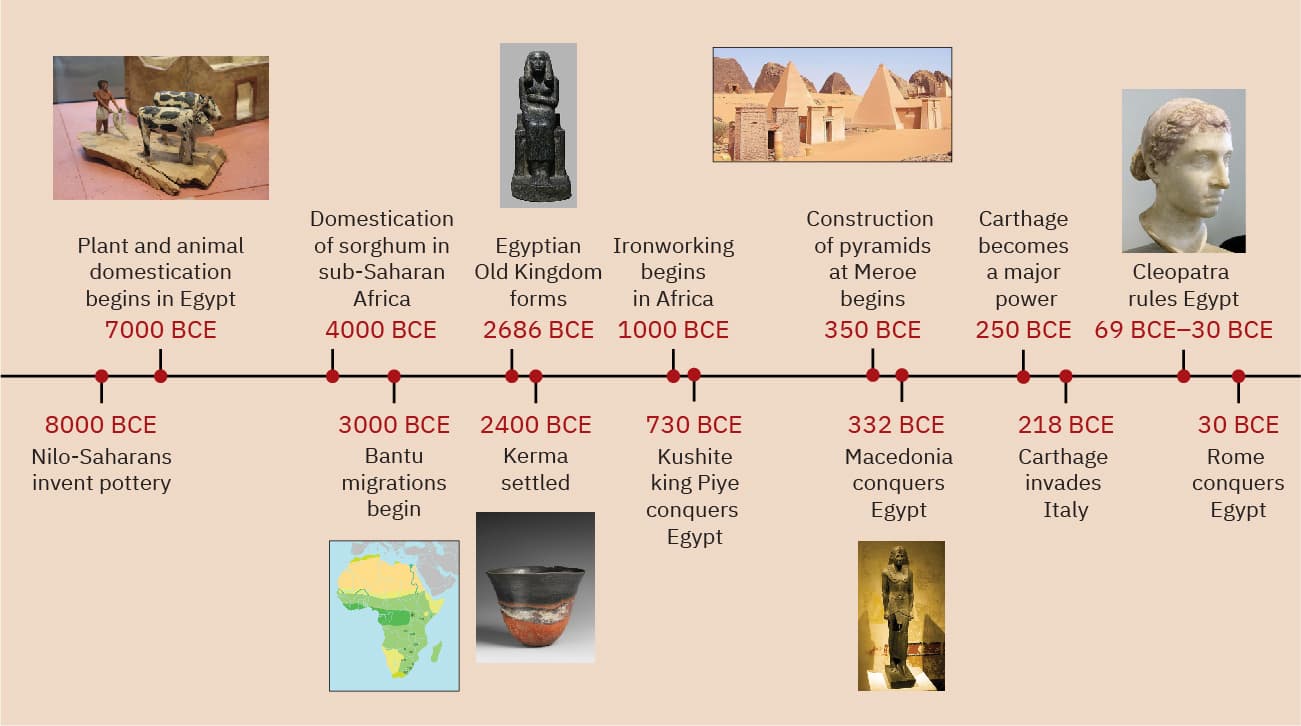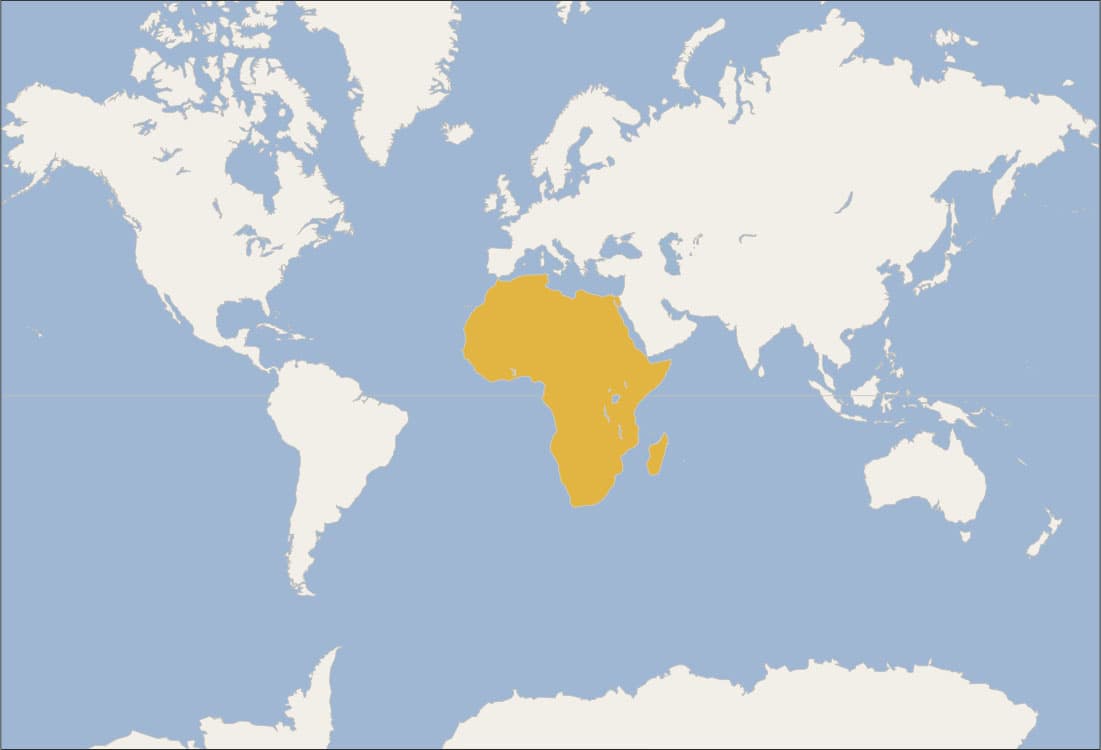Figure 9.1 This rock art in the Cederberg Caves, South Africa, depicts a group of twenty San men interacting with a group of six elephants. In the center of the image, a small elephant extends its trunk as if to sniff one of the men. Painted around 5500 BCE, the artwork likely depicts the special bond between the San people and the elephants, and it demonstrates that even thousands of years ago these African peoples had developed a keen understanding of elephant behavior and characteristics. (credit: modification of work “Cave painting created by the San people in the Cederberg Cave near Stadsaal” by “Valroe”/Wikimedia Commons, Public Domain)
More than eleven million square miles in size, Africa is Earth’s second-largest continent and home to a huge diversity of geographies and climates. Its environments range from arid desertscapes with sand dunes hundreds of feet high to lush tropical rainforests blanketed by impenetrably dense foliage. Its peoples have adapted to these environments over millennia (Figure 9.1), and their achievements were great, but extreme climates wreak havoc on the historical record. Ancient Africa was nevertheless a marvelous mosaic of unique civilizations, and the more historians work at uncovering their pasts, the clearer our picture will be of their accomplishments and contributions to world history.

Figure 9.2 (credit “7000 BCE”: modification of work “Ancient Egypt Wooden Farmer & Oxen Model, Middle Kingdom, c. 2000 BC” by Gary Todd/Flickr, CC0 1.0; credit “3000 BCE”: modification of work “‘Spread of the "Early Iron Age’ in Eastern, Central and Southern Africa, a proxy for the Bantu migrations” by Kevin Shillington/Wikimedia Commons, Public Domain; credit “2686 BCE”: modification of work “Statue of princess Redji” by Museo Egizio/Wikimedia Commons, CC0 1.0; credit “2400 BCE”: modification of work “Classic Kerma Beaker” by Rogers Fund, 1920/The Metropolitan Museum of Art, Public Domain; credit “350 BCE”: modification of work “Pyramids N26 and N27” by “Wufei07”/Wikimedia Commons, Public Domain; credit “332 BCE”: modification of work “Ptolemy III Euergetes” by Szilas/Wikimedia Commons, Public Domain; credit “69 BCE–30 BCE”: modification of work “Marble bust of Cleopatra VII of Egypt” by Altes Museum Berlin/Louis le Grand/Wikimedia Commons, Public Domain)

Figure 9.3 (credit: modification of work “World map blank shorelines” by Maciej Jaros/Wikimedia Commons, Public Domain)